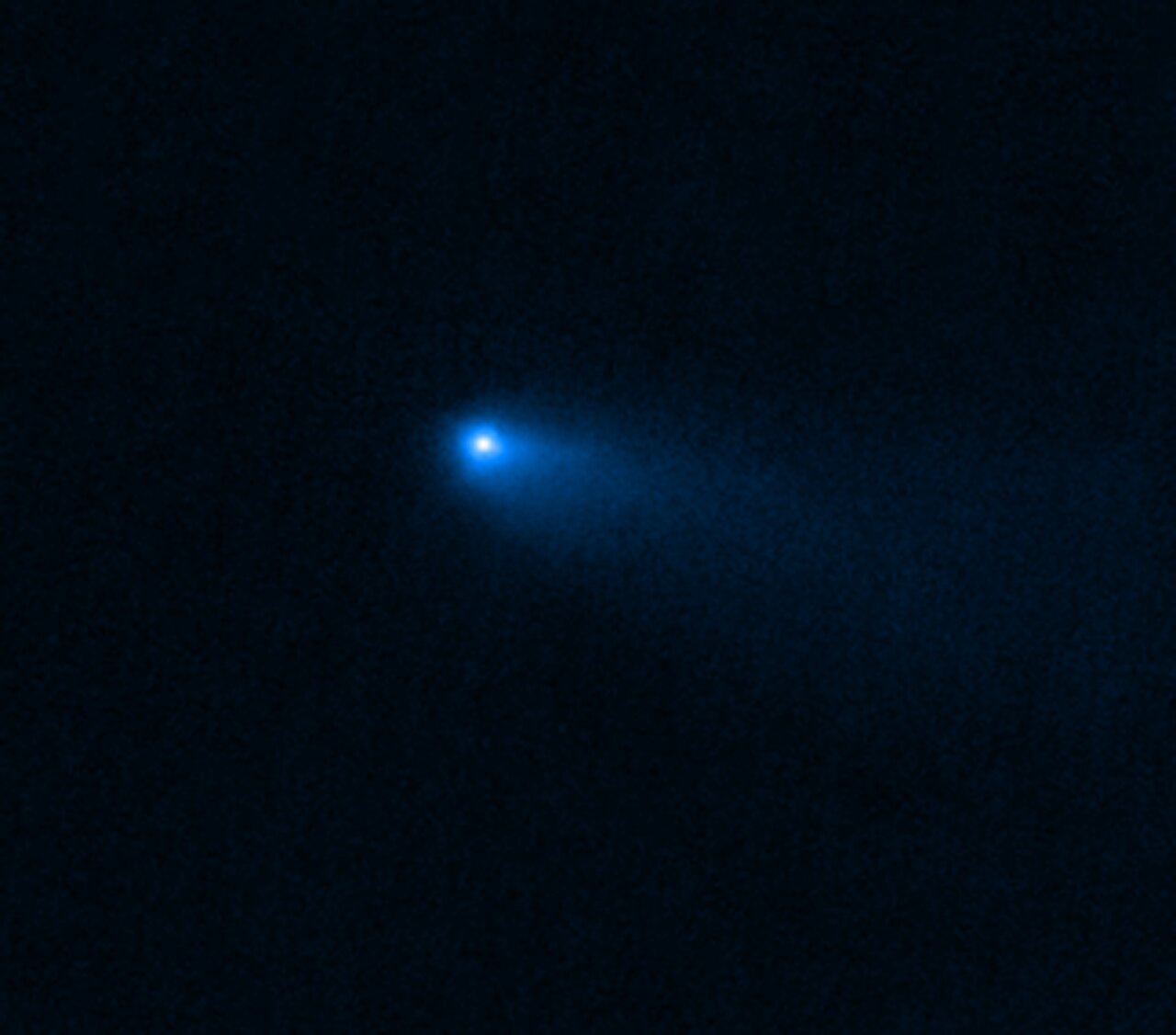James Webb Space Telescope Discovery
Clicking on each image will open the full resolution one. Try it!Clicking on "Raw images" image will yield all the relevant raw images.
Webb Finds Water, and a New Mystery, in Rare Main Belt Comet
This image of Comet 238P/Read was captured by the NIRCam (Near-Infrared Camera) instrument on the NASA/ESA/CSA James Webb Space Telescope on 8 September 2022. It displays the hazy halo, called the coma, and tail that are characteristic of comets, as opposed to asteroids. The dusty coma and tail result from the vapourisation of ices as the Sun warms the main body of the comet.
Credit: NASA, ESA, CSA, M. Kelley (University of Maryland), H. Hsieh (Planetary Science Institute), A. Pagan (STScI)
 NIRCam image of Comet 238P/Read
NIRCam image of Comet 238P/Read
 NIRCam image of Comet 238P/Read (annotated)
NIRCam image of Comet 238P/Read (annotated)
 This artist’s concept of Comet 238P/Read shows the main belt comet sublimating—its water ice vapourising as its orbit approaches the Sun. This is significant, as the sublimation is what distinguishes comets from asteroids, creating their distinctive tail and hazy halo, or coma. The NASA/ESA/CSA James Webb Space Telescope’s detection of water vapour at Comet Read is a major benchmark in the study of main belt comets, and in the broader investigation of the origin of Earth’s abundant water.
This artist’s concept of Comet 238P/Read shows the main belt comet sublimating—its water ice vapourising as its orbit approaches the Sun. This is significant, as the sublimation is what distinguishes comets from asteroids, creating their distinctive tail and hazy halo, or coma. The NASA/ESA/CSA James Webb Space Telescope’s detection of water vapour at Comet Read is a major benchmark in the study of main belt comets, and in the broader investigation of the origin of Earth’s abundant water.
 This graphic presentation of spectral data highlights a key similarity and difference between observations of Comet 238P/Read by the NIRSpec (Near-Infrared Spectrograph) instrument on the NASA/ESA/CSA James Webb Space Telescope in 2022 and observations of Comet 103P/Hartley 2 by NASA’s Deep Impact mission in 2010. Both show a distinct peak in the region of the spectrum associated with water. Finding this in Comet Read was a significant accomplishment for Webb, as it is in a different class of comets than Jupiter-family comets like Hartley 2, and this marks the first time that a gas has been confirmed in such a main belt comet. However, Comet Read did not show the characteristic, expected bump indicating the presence of carbon dioxide.
This graphic presentation of spectral data highlights a key similarity and difference between observations of Comet 238P/Read by the NIRSpec (Near-Infrared Spectrograph) instrument on the NASA/ESA/CSA James Webb Space Telescope in 2022 and observations of Comet 103P/Hartley 2 by NASA’s Deep Impact mission in 2010. Both show a distinct peak in the region of the spectrum associated with water. Finding this in Comet Read was a significant accomplishment for Webb, as it is in a different class of comets than Jupiter-family comets like Hartley 2, and this marks the first time that a gas has been confirmed in such a main belt comet. However, Comet Read did not show the characteristic, expected bump indicating the presence of carbon dioxide.